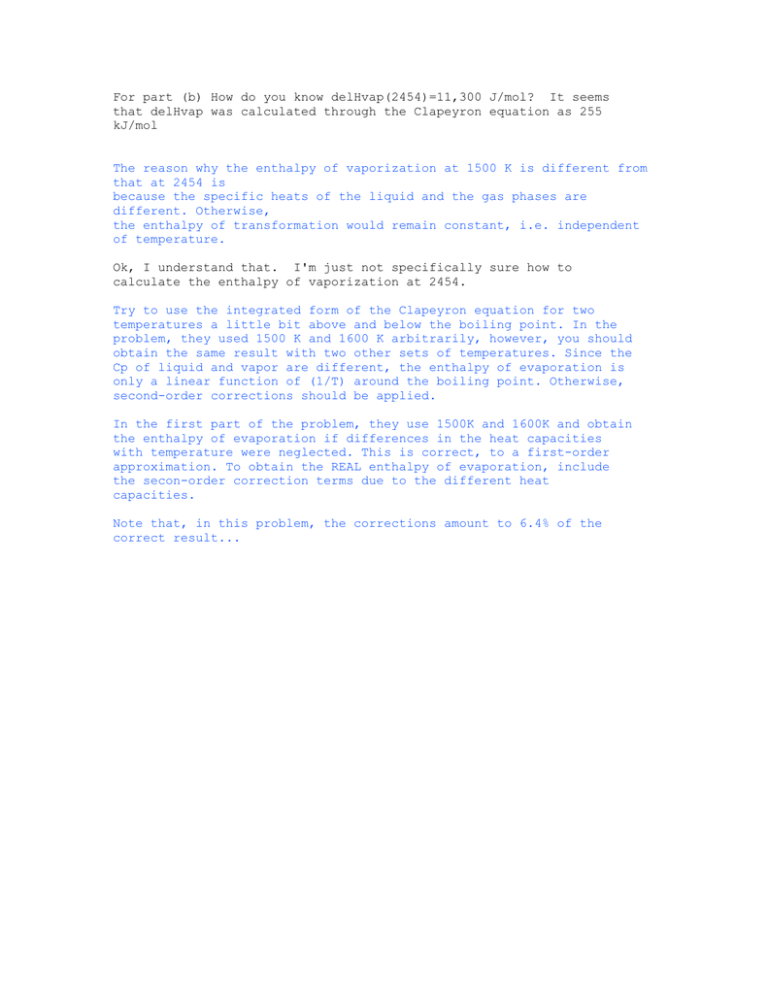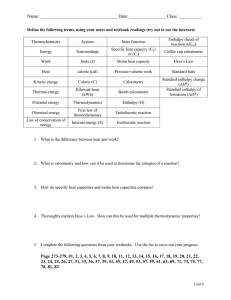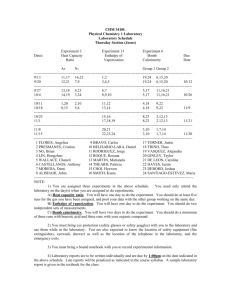For part (b) How do you know delHvap(2454)=11,300 J/mol? ... that delHvap was calculated through the Clapeyron equation as 255
advertisement

For part (b) How do you know delHvap(2454)=11,300 J/mol? It seems that delHvap was calculated through the Clapeyron equation as 255 kJ/mol The reason why the enthalpy of vaporization at 1500 K is different from that at 2454 is because the specific heats of the liquid and the gas phases are different. Otherwise, the enthalpy of transformation would remain constant, i.e. independent of temperature. Ok, I understand that. I'm just not specifically sure how to calculate the enthalpy of vaporization at 2454. Try to use the integrated form of the Clapeyron equation for two temperatures a little bit above and below the boiling point. In the problem, they used 1500 K and 1600 K arbitrarily, however, you should obtain the same result with two other sets of temperatures. Since the Cp of liquid and vapor are different, the enthalpy of evaporation is only a linear function of (1/T) around the boiling point. Otherwise, second-order corrections should be applied. In the first part of the problem, they use 1500K and 1600K and obtain the enthalpy of evaporation if differences in the heat capacities with temperature were neglected. This is correct, to a first-order approximation. To obtain the REAL enthalpy of evaporation, include the secon-order correction terms due to the different heat capacities. Note that, in this problem, the corrections amount to 6.4% of the correct result...




